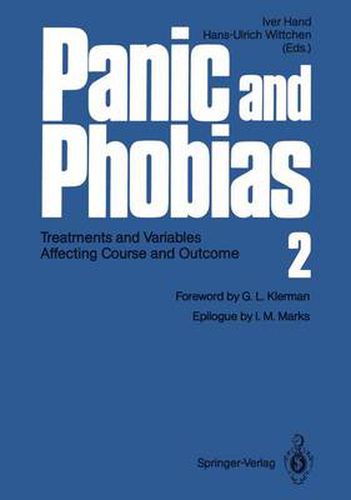Readings Newsletter
Become a Readings Member to make your shopping experience even easier.
Sign in or sign up for free!
You’re not far away from qualifying for FREE standard shipping within Australia
You’ve qualified for FREE standard shipping within Australia
The cart is loading…






This title is printed to order. This book may have been self-published. If so, we cannot guarantee the quality of the content. In the main most books will have gone through the editing process however some may not. We therefore suggest that you be aware of this before ordering this book. If in doubt check either the author or publisher’s details as we are unable to accept any returns unless they are faulty. Please contact us if you have any questions.
Behavioral and biological research in behavioral techniques were developed recent years have produced partially con- already in the early 1970s (Hand et al. tradictory treatment results and recom- 1974) and have proved extremely success- mendations for phobias with and without ful in long-term follow-ups (Hand et al. 1986). The occurrence of panic attacks panic attacks, for panic disorder, and for anxiety disorders in a broader sense. independent of phobic trigger situations The new classification of anxiety disor- is almost never mentioned as an obstacle to the effective behavioral therapy of ders in both DSM-III (1980) and its revision DSM-IIIR (1987), which gives phobias. panic attacks a key role with regard to Until very recently, professional interac- etiology, differential diagnoses, and treat- tion and mutual evaluation regarding ment has not only stimulated research in these contradictory views and results have this field but has also provoked growing been almost non-existent. Together with controversy among clinicians and resear- European and American colleagues, we chers. Biologically oriented authors have addressed these questions in a previous interpreted anxiety disorders with panic volume, examining in more detail the attacks as endogenous disorders linked epidemiological, psychopathological, and to depression, claiming pharmacological experimental evidence for each of these treatments to be the essential interven- positions (Hand and Wittchen 1986).
$9.00 standard shipping within Australia
FREE standard shipping within Australia for orders over $100.00
Express & International shipping calculated at checkout
This title is printed to order. This book may have been self-published. If so, we cannot guarantee the quality of the content. In the main most books will have gone through the editing process however some may not. We therefore suggest that you be aware of this before ordering this book. If in doubt check either the author or publisher’s details as we are unable to accept any returns unless they are faulty. Please contact us if you have any questions.
Behavioral and biological research in behavioral techniques were developed recent years have produced partially con- already in the early 1970s (Hand et al. tradictory treatment results and recom- 1974) and have proved extremely success- mendations for phobias with and without ful in long-term follow-ups (Hand et al. 1986). The occurrence of panic attacks panic attacks, for panic disorder, and for anxiety disorders in a broader sense. independent of phobic trigger situations The new classification of anxiety disor- is almost never mentioned as an obstacle to the effective behavioral therapy of ders in both DSM-III (1980) and its revision DSM-IIIR (1987), which gives phobias. panic attacks a key role with regard to Until very recently, professional interac- etiology, differential diagnoses, and treat- tion and mutual evaluation regarding ment has not only stimulated research in these contradictory views and results have this field but has also provoked growing been almost non-existent. Together with controversy among clinicians and resear- European and American colleagues, we chers. Biologically oriented authors have addressed these questions in a previous interpreted anxiety disorders with panic volume, examining in more detail the attacks as endogenous disorders linked epidemiological, psychopathological, and to depression, claiming pharmacological experimental evidence for each of these treatments to be the essential interven- positions (Hand and Wittchen 1986).